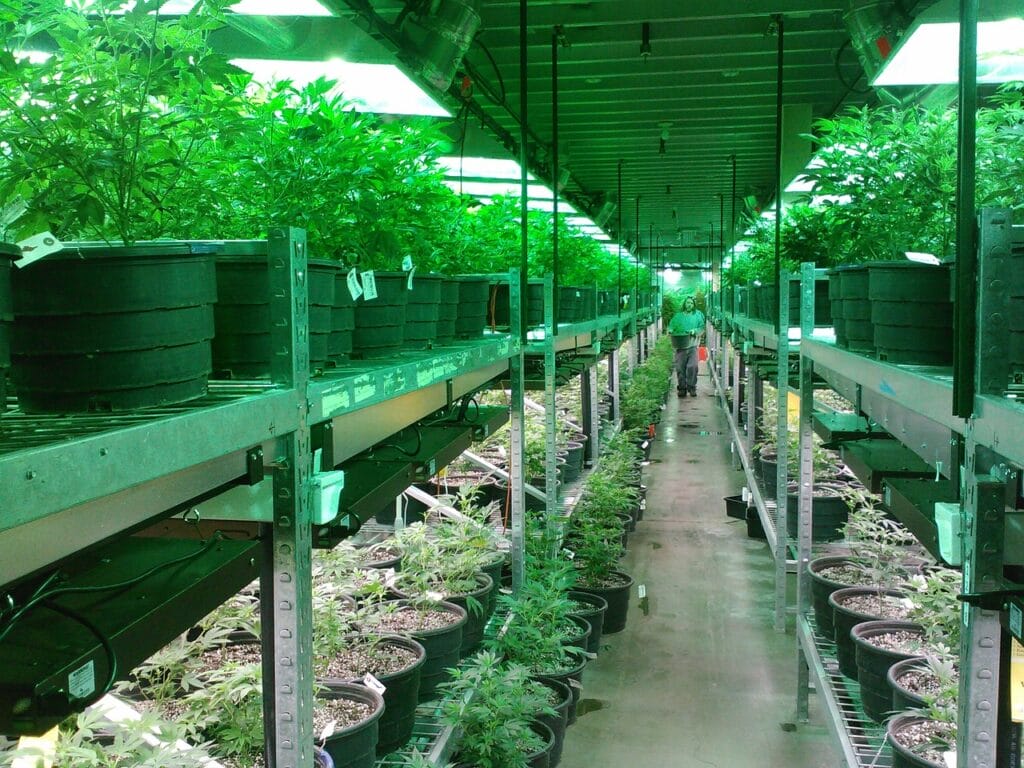Cannabis has been used therapeutically for millennia, primarily for pain relief, sleep promotion, and alleviating distress, depression, and anxiety. Although people initially viewed cannabis with caution and stigma, attitudes toward it have changed significantly.
The demand for medical cannabis has surged, with domestic sales reaching C$401 million from April 1, 2022, to March 31, 2023. Consumers are now exploring beyond traditional dried cannabis flower. They show interest in products like vapes and hash. Small Canadian businesses make it easy to access these products, often just a quick Google search for “dispensary near me” away.
Table of Contents

Historical Context of Medicinal Cannabis Across the Globe to Canada
The journey of medicinal cannabis products in Canada is a tale of evolving regulations, shifting societal attitudes, and growing scientific research. In Canada, the path towards acceptance began to take shape in the late 20th Century.
- 1500 BC: Earliest written records of medicinal cannabis use in Egyptian papyrus writings.
- 1400 BC: Assyrian clay tablets mention cannabis for medicinal purposes.
- 221 BC – AD 220: Cannabis included in the Chinese compendium of medicinal herbs during the Han dynasty.
- c. 484 – c. 425 BC: Herodotus documents the use of cannabis by Scythians to promote “delight.”
- 19th Century: Cannabis becomes prevalent in Western medicine for various therapeutic uses.
- 2001: Marijuana Medical Access Regulations (MMAR) allow seriously ill Canadians to access dried flower for certain medical conditions, such as severe pain from advanced arthritis.
- 2014: In March, Health Canada repeals the MMAR and introduces the “Marijuana for Medical Purposes Regulations” (MMPR), easing initial regulations. Under the MMPR, medical practitioners must complete a “medical document” specifying the daily dose and duration of use for medical marijuana, with no restrictions for specific medical conditions or need to document the failure of conventional treatments.
- 2018: On October 17, cannabis becomes available online and in stores.
Role of Online Dispensaries in Medicinal Cannabis Demand and Consumption
More Canadians are seeking medical cannabis for its therapeutic properties and as an alternative treatment for various conditions. Following recreational use in Canada, medical cannabis (MC) use among rheumatology patients tripled from 2014 to 2019.
Among Canadians aged 16 years and older, ten percent (10%) reported using cannabis for medical reasons. The predominant frequency of use was less than one day per month (28%). The primary symptoms cited for medicinal use were insomnia or sleep problems (45%), chronic pain (33%), and anxiety (31%).
Access to Medical Cannabis and Recreational Cannabis
Few regulatory guidelines exist for the various types of medical marijuana. Although medical and recreational cannabis come from the same plant, there are differences in their properties and uses.
For example, MC users seek types and forms that provide symptomatic relief, while recreational users tend to prefer those with psychoactive effects. Two major variables, strain and form, influence the desired effects.
Online cannabis stores provide access to both and indicate the product’s content and possible benefits. MC users can seek a product form and strain to provide them with the desired effects.
Hybrid Selection
Medical marijuana primarily derives from two cannabis subspecies: Indica and Sativa. Growers cultivate these subspecies to create hybrid strains. The potential effects of different strains vary based on their relative THC and CBD content. Both THC and CBD contribute to the pain-relieving and anti-inflammatory properties of medical cannabis.
Online dispensaries offer a wide selection of hybrid cannabis strains, which allow medical cannabis patients to find the specific characteristics they need. For instance, Indica-dominant hybrids are beneficial for managing sleep problems, while Sativa-dominant strains can help improve mood for patients with depression.
Multitude of Ingestible Forms
There are various forms of medical marijuana, each with unique pharmacokinetic characteristics that influence their onset, duration, and intensity of effects. Similar to other medications, different medical marijuana forms exhibit varied onset and duration of action, which are necessary considerations for patients and healthcare providers.
For instance, patients experiencing severe, acute pain may need medical cannabis forms that offer immediate relief, while those with epilepsy often prefer options that provide long-lasting symptomatic control.
Product Quality and Safety
Authorities have implemented stringent regulations to ensure product quality and safety. These regulations include the following requirements:
- Analytical cannabis testing detects and limits contamination and assesses consistent and appropriate cannabinoid levels in the product.
- Designate a quality assurance person to oversee quality controls.
- Development of a sanitation program.
Online dispensaries collaborate with cannabis businesses to offer quality products that are well-tested for the assurance and safety of MC patients.
Ease of Access for Medical Cannabis Customers
Many dispensaries offer online orders, where patients can browse the product catalogue, read detailed descriptions, and place orders with a few clicks or touch gestures like double tap and drag. This digital approach caters to tech-savvy customers and ensures they can easily access the products they need. Some online businesses also give customers options from metric and imperial units when they are buying their cannabis flower.
Delivery services ensure that patients receive their medicinal cannabis products promptly and discreetly. These services are beneficial for patients who may not be able to visit a dispensary in person due to health issues or other constraints. Integrating delivery services with real-time tracking and map functionalities lets patients know when their orders will arrive.
Product Variety and Quality Control
The most significant shift in cannabis consumption will be the move from smoking traditional flower to using extract-based products. Extracts form the foundation of most cannabis products beyond smoking, like vapour oils, capsules, tinctures, sublingual, transdermal patches, edibles, topicals, suppositories, and infused beverages. Mondin is confident we will see diverse consumption methods and new products.
| Product Type | Description | Sample Products |
| Dried Flower | Smoke or vaporize to deliver rapid relief Effects may diminish anywhere from 90 minutes to 4 hours after consumption. | Snow Leopard (Indica)Lemon Haze (Sativa)Mochi (Hybrid) |
| Edibles | Consumed in various forms like gummies, chocolates, brownies, cakes, and butter. These options offer a longer-lasting effect (up to 10 hours) due to the slower absorption in the gastrointestinal tract. | ONE-STOP – Mango CBD 500mg (Gummies)Potluck – Toffee (Skor) – 300mg THC (Chocolate) |
| Concentrates | Smoked, vaporized, or consumed as a dab or added to food This product contains a high proportion of cannabinoids, from 60 to 90% | Moroccan Love Hash (Hashish)Acapulco Gold 2g (Shatter)CBD Tears – Full Spectrum 1mL (Oil)White Widow 2g (Budder) |
| Topicals | You can apply these products to areas of concern or localized pain. They come in various forms, like balms, lotions, oils, and transdermal patches. | Cannamo – CBD Isolate Lion Balm – 1500mg (Ointment) |
| Vapes | These pen-like devices feature an opening designed for inhaling vapour. | OneStop – THC Distillate – Hybrid – 3ml (Disposable vape) |

GrassLife: A Forefront to Your Medical Cannabis Needs
GrassLife ensures that medical cannabis customers have broad access to safe, effective, and high-quality cannabis products. Through our commitment to quality control, customer education, and innovation, we are one of the many dispensaries that will continue to shape the future of medicinal cannabis in Canada. We also ensure that patients across Canada have access to enough cannabis by providing delivery options and affordable prices with discounts and promos.
Frequently Asked Questions
What is the most popular cannabis product among medical cannabis patients?
In the latest Canadian cannabis survey, the majority of customers who use cannabis for medical reasons prefer cannabis oil (53%), followed by edibles (42%) and topical products (29%). Among non-medical users, dried flower is the most popular choice, with 63% of respondents selecting it.
Is cannabis a medical expense in Canada?
You may claim the amounts for cannabis products purchased for medical purposes, but only with a prescription, under the CRA’s list of allowed medical costs.
You can claim medical expenses for any 12 months not previously claimed as long as the final month falls within the tax year, just like your other medical expenses.
Is it cheaper to buy medical cannabis from an online business?
An online cannabis store offers lower prices because it can reach a broader customer base than brick-and-mortar shops. Online dispensaries also eliminate the need for staffing and physical storefronts to store inventory.
Online dispensaries offer regular discounts, and buying in bulk is easier because orders are delivered to your doorstep, regardless of location.
Related Article:



